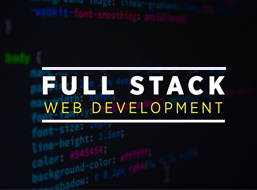Table of contents:
|
1. Step 1: Strengthening the Foundations (Cloud Computing Basics & Technology) |
|
2. Step 2: Climbing the Ladder, From Engineer to Architect |
|
3. Architect Eligibility: What It Takes |
|
4. How to Become a Cloud Architect: A Practical Roadmap |
|
5. Challenges and Common Missteps |
|
6. Role of Training and Apponix’s Approach |
|
7. Final Thoughts |
|
8. FAQs |
As a trainer at Apponix, I often meet professionals who begin as cloud engineer and dream of becoming a full-fledged cloud architect. It’s a journey that combines mastering cloud computing basics, gaining hands-on experience, and developing design thinking.
In this post, I’ll walk you through the steps, challenges, and strategies to transform from working cloud engineer jobs into architect roles that steer strategy and innovation.
Step 1: Strengthening the Foundations (Cloud Computing Basics & Technology)

To progress, you must build strong foundations. I always begin by focusing on cloud computing basics, understanding virtualization, networking, storage, databases, and cloud deployment models (IaaS, PaaS, SaaS). Without these, you won’t make robust architecture decisions later.
Your next layer in cloud computing technology, for example, is knowing how AWS, Azure, or GCP services work, what their limitations are, how to integrate components, and how to manage scalability, security, and cost. In our sessions at Apponix, we simulate real-world setups so you experience how pieces interact in a live system.
While working in cloud engineer jobs, you’ll often implement parts of infrastructure: provisioning VMs, managing networking, and automating deployments. That gives you the exposure to real systems. I encourage you to treat each project not just as a task, but as a mini-architecture puzzle: ask why that design was chosen, what trade-offs were made, and how it could improve.
Step 2: Climbing the Ladder, From Engineer to Architect
A Cloud Architect doesn’t just build; they design, foresee, guide, and optimize. To shift from engineering to architecture, here’s how I guide learners:
-
Own the design mindset: begin asking architectural questions early, fault tolerance, multiregion design, microservices vs monoliths, data flow, and failure recovery.
-
Understand cross-cutting concerns: security, governance, compliance, cost management, and observability; these all shape architecture.
-
Shadow an architect or senior role: If possible, work alongside someone designing and reviewing architecture. Observe their approach to trade-offs.
-
Contribute to architecture reviews: give your inputs, propose alternatives, and defend your ideas based on data.
-
Take side projects or design exercises: Design cloud architecture for sample business cases, an e-commerce platform, a streaming service, and a healthcare system. Share and critique designs.
As you gain design exposure, your visibility increases, and you become eligible for architect roles.
Architect Eligibility: What It Takes
What makes someone eligible to become a cloud architect? From my experience training dozens of students, here are the key criteria I enforce:
-
Hands-on experience: At least 2–4 years working in cloud engineering roles managing infrastructure, deployments, automation, and services.
-
Breadth across domains: You should know networking, storage, compute, databases, security, monitoring, and integration across cloud platforms.
-
Design problem-solving: You need to be able to analyze requirements, trade-offs, and constraints and propose holistic system designs.
-
Certification and credentials: Achieving certifications validates your knowledge (for example, AWS Solutions Architect or equivalent).
-
Soft skills & stakeholder management: You must explain architecture to management, align with business goals, and lead cross-functional teams.
-
Continuous learning mindset: Cloud and architecture paradigms shift—so keeping updated with new patterns, services, and design approaches is essential.
If you meet these criteria, you’re ready to aim for architect roles.
How to Become a Cloud Architect: A Practical Roadmap
Here is a step-by-step approach I recommend as a trainer:
-
Master a cloud platform deeply: Pick AWS, Azure, or GCP, and use it intensively. Learn the services and their design trade-offs.
-
Work in real cloud engineer jobs: Gain experience deploying, troubleshooting, scaling, and optimizing real systems.
-
Build automation & DevOps skills: Infrastructure as code, CI/CD, containerization, orchestration. These let you scale and manage systems reliably.
-
Learn architecture patterns: Microservices, event-driven, distributed systems, caching, data partitioning, and eventual consistency.
-
Practice analyzing use cases: For each scenario, sketch architectures, why you choose one design over another.
-
Take a dedicated cloud architecture course or training: It helps you fill gaps, learn new patterns, and get mentorship feedback.
-
Prepare for architect interviews: Solve system design problems, review case studies, and present designs.
-
Apply and transition: Once you feel confident, start applying for cloud architect roles. Use your portfolio of designs and projects to show your capability.
When you enroll in a cloud computing course in Bangalore, especially one offered by Apponix Training Institute in Bangalore, you gain structured learning and peer reviews, which accelerate your path.
Challenges and Common Missteps
From my years of training, I see learners stumble over a few pitfalls:
-
Staying narrow: Engineering one service without seeing full-stack interaction.
-
Avoiding foundational weakness: Skipping basics and trying to design first.
-
Overengineering: Designing overly complex systems where simpler ones suffice.
-
Ignoring cost and trade-offs: Performance and resilience are valuable, but cost matters.
-
Not keeping up with cloud evolution: Architects must evolve as cloud providers add new services.
I coach learners to avoid these and adopt a balanced perspective.
Role of Training and Apponix’s Approach
At Apponix, I help learners transition from engineering roles toward architecture by combining theory, guided design reviews, hands-on labs, and mentorship. In our cloud architecture courses, you will:
-
Work on real-world design assignments (end-to-end architectures).
-
Get feedback from senior architects.
-
Learn the latest services and best practices.
-
Access mock interviews focused on system design.
-
Be part of a peer group reviewing and critiquing designs.
We also emphasize architect eligibility as a continuous journey; you don’t jump; you evolve. Our goal is to prepare you not just for job roles but for ownership and leadership in cloud architecture decisions.
Final Thoughts
Transitioning from cloud engineer to cloud architect is one of the most rewarding career upward moves in tech. You move from executing tasks to envisioning and steering entire systems. As a trainer at Apponix, I’ve seen many engineers who once doubted their potential become trusted architects responsible for scalable, secure systems powering global operations.
Your journey begins with mastering cloud computing basics and technology, proving competence in engineering roles, and adopting the architectural mindset, thinking in systems, trade-offs, resilience, and scalability. Once you meet the architect eligibility requirements, supported by solid experience and design ability, craft your portfolio, refine your soft skills, and target architect positions.
If you’re ready to level up, Apponix, Training Institute in Bangalore helps you get there. Our cloud architecture training, mentorship, and portfolio support are structured to fast-track your move. Commitment, practice, and guided growth make the difference.
FAQs
Q1: How long does it typically take to become a cloud architect from being a cloud engineer?
It varies, but often between 2 to 5 years—depending on how deeply you engage, how many projects you take ownership of, and how actively you practice architectural design.
Q2: Do I need to be an expert in programming to be a cloud architect?
You need a working level of scripting or coding (Python, Bash, etc.) to automate infrastructure and integrations. But you don’t have to be a software expert. Architectural vision, systems thinking, and design skills are more crucial.
Q3: Which cloud platforms should I focus on?
Pick one (AWS, Azure, or GCP) and master it deeply. Understanding multiple clouds helps, but depth in one gives confidence. Your first architecture roles will likely use your specialization.
Q4: What exactly is a cloud architecture course good for?
It helps you fill gaps in knowledge, gives structured projects and feedback, and simulates real architecture challenges in a guided manner. It accelerates your learning through trial and error.
Q5: Is Apponix’s training beneficial for this transition?
Yes. At Apponix, we design training from both engineering and architectural lenses. You don’t just learn services; you learn reasoning, design critique, and mentorship to help you build a portfolio that employers trust. I’ve personally guided many learners through this transition.




